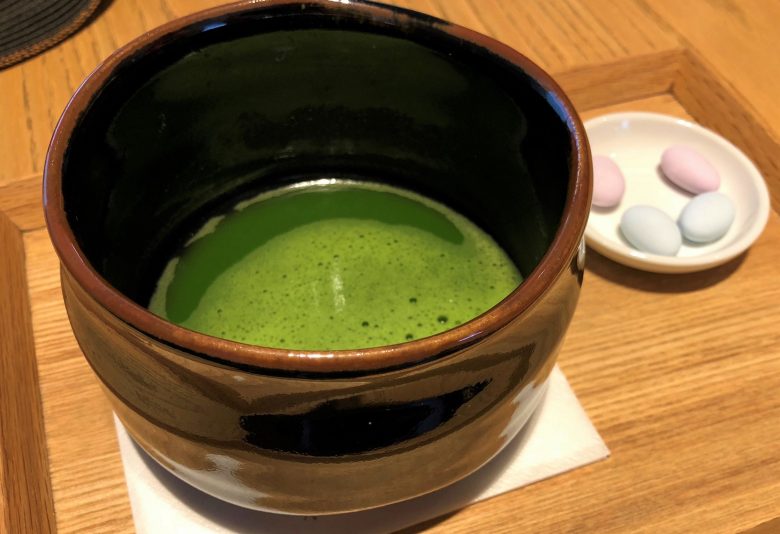
Living in Japan’s traditions: Matcha green tea
Living in Japan is an experience to enjoy with all ones senses. From the lively atmosphere of the large Tokyo streets, to the satisfying foods and the endless amount of creative shops all around, there is so much to take part on. Many things you shall learn from at your Japanese language school, by your colleagues while working at a local company or completing an internship at Japanese institution, and also from your share house housemates or guest house roommates of Sakura House. From all of these wonderful aspects of staying in Japan, we focus in this Sakura Tip on one that has strongly left its footprint in the Japanese culture even until this day. Searched by both locals and foreigners for its unique taste and great health benefits, we are talking about the matcha green tea.

Green tea has been consumed for centuries all around the Asian region, and Japan has certainly embraced it and continues to use it in a great range of products. The particularity of matcha green tea takes place during its careful growing process. To many people’s surprise, the leaf of this type of tea is the same as the regular green tea, oolong tea and even black tea, the difference only takes place during the growth and harvest period.
To begin with, fields dedicated to the production of matcha green tea are covered by bamboo mats or rice straws carefully mounted on top. This prevents the direct contact with the sun, thus producing a change in balance of the natural chemicals in the leaves. In doing so, they become greener in appearance and also increases their amino acids which then provide that unique “umami” flavor (a fifth taste originated in Japanese cuisine relating to a pleasant soothing taste).
Around mid-April to mid-May, the harvest process begins by handpicking the youngest and greenest tea leaves. These shall be the highest grade of matcha. Right after this the leaves are steamed for a few seconds to prevent their oxidation and keep their nutritional value. Later, a blower shall eliminate the remaining moisture and leave them ready to be crushed and sorted.
Just before giving the matcha leaves their final grounding process that shall turn them into powder, the leaves are de-veined and de-stemmed to ensure only the finest leaves continue to the next and final process. After being grinded, the powder is packed in a vacuum container such as bags or cans that we can all then purchase at the supermarkets and specialty tea stores.

Matcha tea has been the protagonist of one of Japan’s most renown formal ceremonies, the tea ceremony. It is said that the consumption of this tea started with the Japanese monks since it was believed to help achieve enlightenment. This may be so due to the long lasting, but not over stimulating, effect of its caffeine. However, the history of this tea dates all the way back to around the 7th and 10th century in China, when tea was produces into blocks by steam for easier transportation. During this time, and up to the 13th century, Japanese Buddhist monk Eisai visited China to further his studies of Buddhism and came across this beverage. He later introduced this tea to Japan on his return and planted the seeds he brought at his temple located in Kyoto, where it was thereafter produced in small quantities.
It wasn’t until the 1500’s that “Chado”, or “Sado”, (the tea ceremony) started to take place. It’s founder was a Zen student named Murata Juko. However, the tea ceremony as we know it today was the perfected art of Zen Master Sen-no-Rikyu, who emphasized the four basic principles of this ritual that shall later extend into the Japanese society: harmony, respect, purity and tranquility.

Nowadays matcha can be found everywhere, from sweets, creative beverages, noodles and even beer (yes, there is even a matcha beer). One place to enjoy more of this emblem of the Japanese culinary world is the area of Uji, where some of the finest production takes place.
It is possible to reach this area easily from SAKURA HOUSE KYOTO‘s machiya share houses and private houses.
If you are planning your stay in Kyoto for a Japanese study program, university study exchange, work, intern or just travel and enjoy this and other cultural unique features of Japan, contact our dedicated multilingual staff and we shall be happy to search for our best option to accommodate your needs.
SAKURA HOUSE
Nishi-Shinjuku K-1 Bldg. 2F
7-2-6 Nishi-Shinjuku, Shinjuku-Ku Tokyo, Japan
Postal code: 160-0023
Google map
- From Japan:
- 03-5330-5250
- From outside Japan:
- +81-3-5330-5250
- Mail:
- [email protected]
- Office hours:
- 8:50 am to 8:00 pm
We are open every day of the year.
- Tokyo time:
- 19:04(We are open now!)







